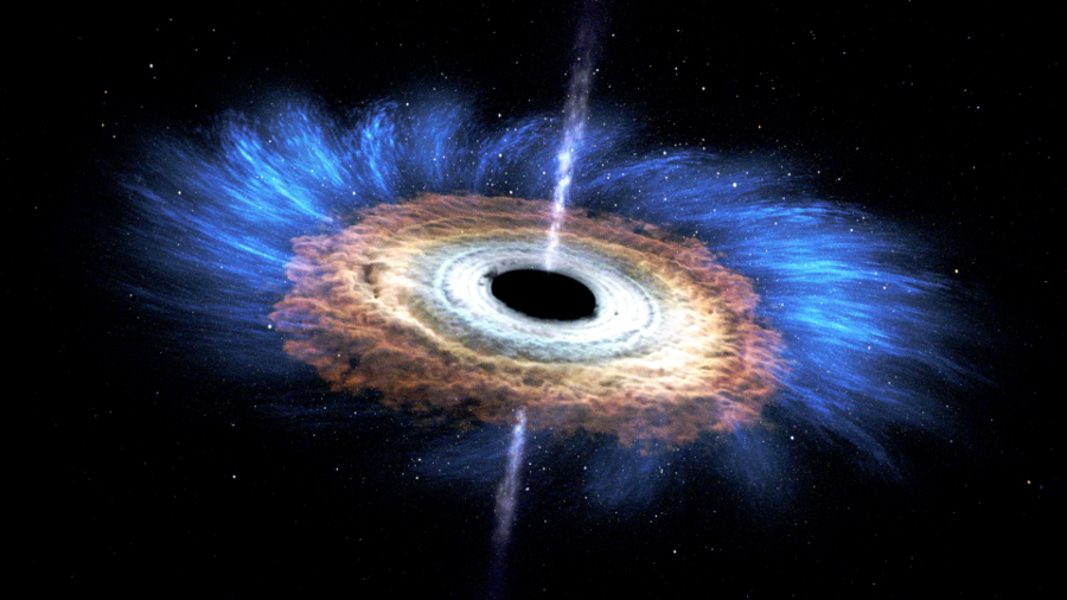
 Credit: NASA's Goddard Space Flight Center
Credit: NASA's Goddard Space Flight Center
Shredding
The fixed stars are not fixed, but move through space with astonishing speeds. Sometimes this movement is produced by the tug of nearby objects, sometimes stars are propelled by the force of a titanic explosion of a companion. These stellar movements can send stars on interesting adventures as they fly through their host galaxy. But space can be a dangerous place, littered with black holes that may gobble up a star if it happens to wander too close. And happen this does. If a star wanders too close to a black hole, the extreme gravity of the black hole can rip the star star apart. The disrupted star stuff will then circle around the black hole for a brief interval before falling down the cosmic drain (and perhaps some material will escape the black hole in the form of a jet of particles). The image above shows an illustration of the transient accretion disk and black hole jet produced from the remnants of some poor disrupted star being swallowed by a black hole of a few million times the mass of the sun. As material swirls around the black hole, there's a brief outpouring of high-energy radiation and ultraviolet and optical light, which we can see if we happen to be looking in the right place. There are now nearly 100 transient events that astronomers believe were produced by the disruption of stars by black holes, in our Galaxy and beyond. The Neil Gehrels Swift Observatory made a detailed study of the X-ray and UV light emitted by one such event, first observed in November 2014. The Swift X-ray and UV/optical observations showed that the X-ray emission varied along with the optical and UV emission, but the changes to the X-ray brightness occurred about a month after similar changes observed in the optical and UV. Astronomers interpret these coordinated variations as part of the dance that the shredded star made, before taking the final plunge through the black hole's event horizon.
Published: August 27, 2018
<
HEA Dictionary ● Archive
● Search HEAPOW
● Other Languages
● HEAPOW on Facebook
● Download all Images
● Education ● HEAD
>

Each week the HEASARC
brings you new, exciting and beautiful images from X-ray and Gamma ray
astronomy. Check back each week and be sure to check out the HEAPOW archive!
Page Author: Dr. Michael F. Corcoran
Last modified Monday, 26-Feb-2024 17:24:06 EST


